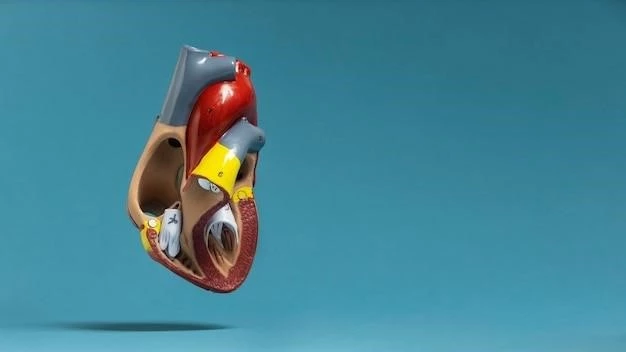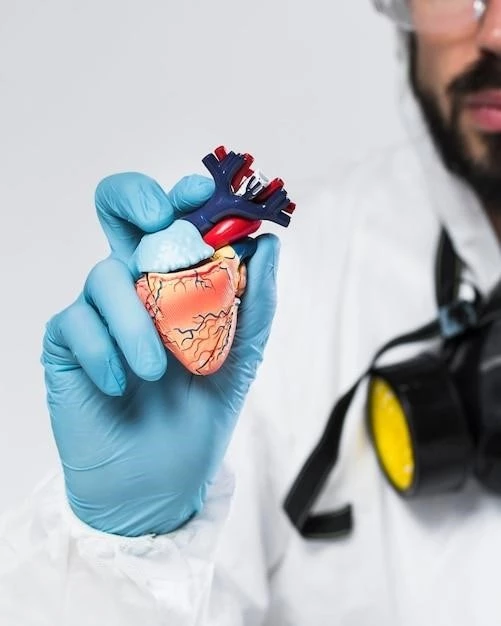Overview of Subvalvular Aortic Stenosis
Subvalvular aortic stenosis (SAS), also known as subaortic stenosis, is a rare heart defect mainly affecting infants. The condition involves a membrane or narrowing below the aortic valve, obstructing blood flow from the left ventricle.
Definition and Characteristics
Subvalvular aortic stenosis (SAS), also known as subaortic stenosis, is a rare heart defect primarily observed in infants. It involves a membrane or narrowing below the aortic valve, creating an obstruction to the flow of blood from the left ventricle. This condition, classified as a congenital heart defect, typically presents challenges in the effective pump of oxygenated blood to the body due to the constriction in the left ventricular outflow tract.

Causes of Subvalvular Aortic Stenosis
Causes of subvalvular aortic stenosis involve a narrowing below the aortic valve, leading to obstruction of blood flow through the heart. This condition can range from mild to severe, impacting the heart’s function and potentially causing harm.
Underlying Factors
Subvalvular aortic stenosis is primarily caused by a membrane or narrowing below the aortic valve. This obstruction disrupts the normal flow of blood from the left ventricle, impacting the heart’s ability to efficiently pump oxygenated blood to the rest of the body. While classified as a congenital heart defect, the condition can vary in severity and may necessitate interventions to manage its effects.

Diagnosis and Evaluation
Diagnosis of subvalvular aortic stenosis involves assessing the obstruction below the aortic valve through various imaging techniques such as echocardiography. Evaluation aims to determine the extent of the obstruction and its impact on cardiac function.
Imaging Techniques
Imaging techniques used in the diagnosis of subvalvular aortic stenosis primarily focus on echocardiography. Transthoracic echocardiography, especially two-dimensional imaging with color and spectral Doppler, is the primary modality for evaluating the anatomical and hemodynamic aspects of the condition. These imaging methods help in visualizing the subvalvular stenosis, identifying associated anomalies, and assessing the involvement of accessory structures such as the mitral valve.
Treatment Options
Treatment options for subvalvular aortic stenosis may involve surgical correction to alleviate the obstruction and improve blood flow through the heart. The specific treatment approach depends on the severity of the condition and the individual characteristics of the patient.
Surgical Correction
Surgical correction is a key treatment option for subvalvular aortic stenosis, aiming to alleviate the obstruction below the aortic valve. This procedure can help improve blood flow through the heart and restore normal cardiac function. The decision to undergo surgical correction is based on the severity of the condition, individual patient factors, and the overall goal of enhancing long-term prognosis and quality of life.
Prognosis and Outcomes
The prognosis for subvalvular aortic stenosis varies based on the severity of the condition and the effectiveness of treatment. Outcomes after surgical correction largely depend on the nature of the stenosis and the presence of associated cardiac lesions.
Predictive Factors
Subvalvular aortic stenosis outcomes are influenced by various predictive factors, including the severity of the condition, the presence of associated cardiac lesions, and the effectiveness of interventions such as surgical correction. Understanding these factors plays a crucial role in determining the long-term prognosis and optimizing patient outcomes.
Comparison with Other Forms of Aortic Stenosis
When comparing subvalvular aortic stenosis with other forms of aortic stenosis, it is crucial to understand the distinctive features that set them apart in terms of anatomical location, underlying causes, and potential treatment approaches.
Distinctive Features
Subvalvular aortic stenosis (SAS) presents distinct features compared to other forms of aortic stenosis, particularly in the anatomical location of the obstruction below the aortic valve and the variations in underlying causes. The condition may require specific treatment approaches tailored to the obstruction’s nature and impact on cardiac function.
Research and Recent Findings
Advancements in understanding subvalvular aortic stenosis have primarily focused on imaging techniques, with echocardiography being instrumental in delineating the condition’s anatomical and hemodynamic features. Ongoing research continues to enhance the management strategies for this rare heart defect.
Advancements in Understanding and Management
Recent advancements in understanding subvalvular aortic stenosis have predominantly focused on imaging modalities, notably echocardiography, to delineate the condition’s anatomical and hemodynamic aspects. Ongoing research aims to enhance management strategies and optimize treatment outcomes for this rare congenital heart defect.
